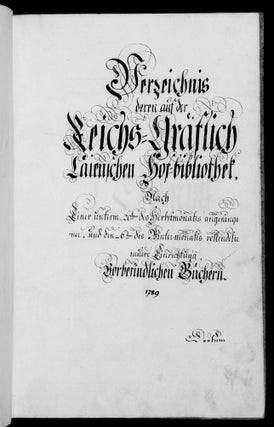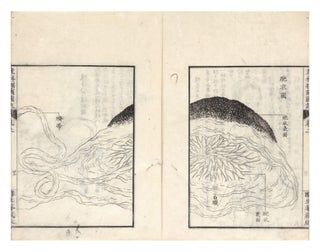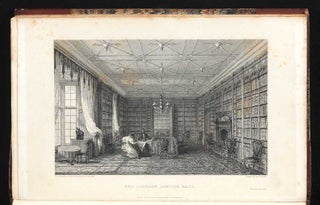13th-Century Woodblocks of the Lotus Sutra
Two woodblocks, each carved on both sides (ca. 270 x 844 x 18 mm.; text size per sheet: ca. 224 x ca. 665 mm.) of the Lotus Sutra [S.: Saddharmapundarikasutra; J.: Myohorengekyo 妙法蓮華経].
17 characters per column for prose sections; 20 characters per column for the versified sections; 32-33 columns per sheet. [Japan]: Kasuga-ban, mid-Kamakura period [13th century].
Two woodblocks, carved on each side in Japan in the 13th century at the Kofukuji Temple in Nara, containing text from juan four and five of the Lotus Sutra. These woodblocks were carved in Japan in the 13th century and are the earliest Asian woodblocks we have yet encountered.
The Lotus Sutra is the most influential of all sutra and “was highly influential in East Asia, inspiring both a range of devotional practices as well as the creation of new Buddhist schools that had no Indian analogues.”–Buswell & Lopez, eds., The Princeton Dictionary of Buddhism, p. 730. For several Japanese schools of Buddhism, the Lotus Sutra remains their central text and is considered to be the only valid Buddhist sutra for the Degenerate Age.
The first woodblock contains text from the tenth chapter of the Lotus Sutra, entitled “Chapter on the Dharma Teachers” (fashi pin), which — according to the Digital Dictionary of Buddhism (DDB) — “explains the merits of five kinds of teachers.” However, our woodblock does not contain the whole chapter, only a consecutive chunk from within it.
Our second woodblock contains text from juan five and the chapter titled “Chapter on the Longevity of the Tathagata,” in which — DDB tells us — “Buddha declares his eternity.” Again, the text on this woodblock is consecutive but does not contain the entire chapter.
There is some wear to the surfaces of the woodblocks, but they are in very good condition. These woodblocks were professionally conserved by A.M. Art Conservation LLC (full report available). An active wood-boring beetle infestation was suspected. The woodblocks were put in a chest freezer for a 21-day duration at temperatures ranging from -27 to -30 C. This treatment “should successfully ensure a kill of all life stages of the furniture beetle.”–from the report, which goes on to state: “Given the extent of the insect channeling, it should be expected that the piece [both woodblocks] will continue to emit frass when handled or moved.”
❧ K.B. Gardner, “Centres of Printing in Medieval Japan: late Heian to early Edo period” in British Library Occasional Papers 11. Japanese Studies (ed. by Yu-Ying Brown), London: 1990, p. 159–”The term Kasuga-ban became used more loosely, in a wider sense, to denote publications of the Nara monasteries in general, not only of the Kofukuji. The printing of Kasuga-ban in this broader sense flourished throughout the Kamakura period and up to the end of Muromachi (ca. 1570).”.
Price: $27,500.00
Item ID: 8679

![Item ID: 8679 Two woodblocks, each carved on both sides (ca. 270 x 844 x 18 mm.; text size per sheet: ca. 224 x ca. 665 mm.) of the Lotus Sutra [S.: Saddharmapundarikasutra; J.: Myohorengekyo 妙法蓮華経]. LOTUS SUTRA WOODBLOCKS, KASUGA-BAN.](https://jonathanahill.cdn.bibliopolis.com/pictures/8679.jpg?width=768&height=1000&fit=bounds&auto=webp&v=1673468948)
![Two woodblocks, each carved on both sides (ca. 270 x 844 x 18 mm.; text size per sheet: ca. 224 x ca. 665 mm.) of the Lotus Sutra [S.: Saddharmapundarikasutra; J.: Myohorengekyo 妙法蓮華経].](https://jonathanahill.cdn.bibliopolis.com/pictures/8679_2.jpg?width=320&height=427&fit=bounds&auto=webp&v=1673468948)
![Two woodblocks, each carved on both sides (ca. 270 x 844 x 18 mm.; text size per sheet: ca. 224 x ca. 665 mm.) of the Lotus Sutra [S.: Saddharmapundarikasutra; J.: Myohorengekyo 妙法蓮華経].](https://jonathanahill.cdn.bibliopolis.com/pictures/8679_3.jpg?width=320&height=427&fit=bounds&auto=webp&v=1673468948)
![Two woodblocks, each carved on both sides (ca. 270 x 844 x 18 mm.; text size per sheet: ca. 224 x ca. 665 mm.) of the Lotus Sutra [S.: Saddharmapundarikasutra; J.: Myohorengekyo 妙法蓮華経].](https://jonathanahill.cdn.bibliopolis.com/pictures/8679_4.jpg?width=320&height=427&fit=bounds&auto=webp&v=1673468948)



